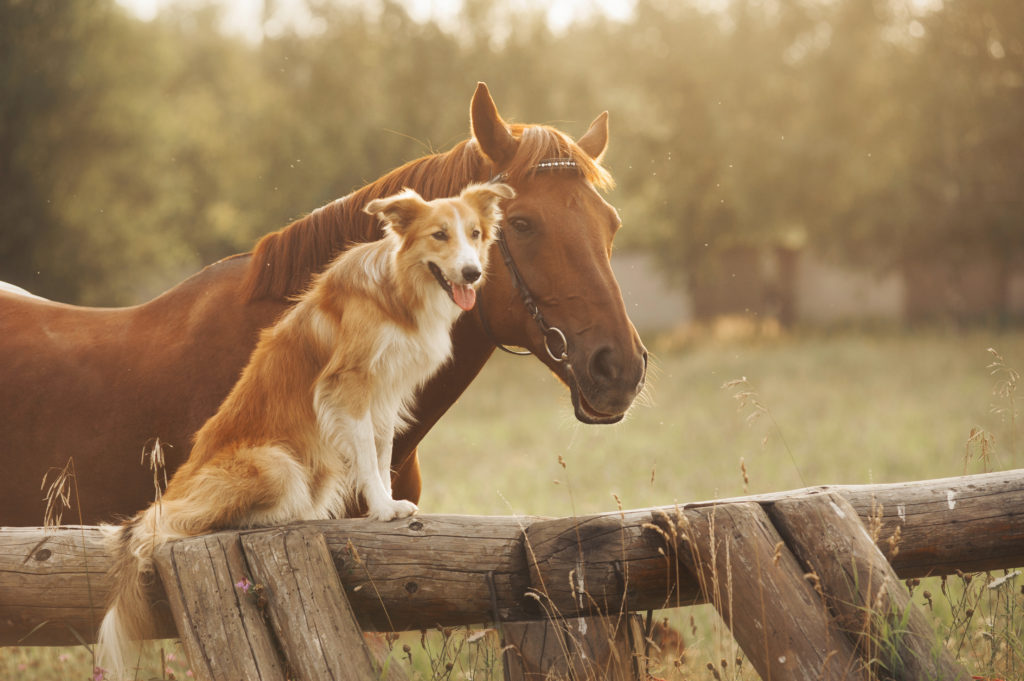Understanding the various conditions that your horse may face can help you to identify problems when they arise. This will help to ensure that you obtain the appropriate treatment to keep your horse healthy and comfortable. While kissing spines are generally not a particularly serious condition, they can cause your horse a great deal of pain. When you identify kissing spines early on, you will be able to provide the treatment that your horse needs to remain healthy and comfortable. Here are a few important things to know about kissing spines.
What are Kissing Spines?

The spine of a horse is very different from the spine of a human. Their spine contains multiple components that are called spinous processes. These spinous processes extend upward from the spine of a horse. When two or more of these spinous processes are located too close together, they may touch together. This can cause many negative consequences for the horse, including extreme back pain, the possibility of microfractures, and inflammation. In addition to these consequences, it is possible that kissing spines will cause the horse to alter their posture to compensate for the pain. This can lead to additional injuries caused by putting to much strain on certain parts of their body. Treatment for kissing spines can help to keep your horse comfortable.
Common Causes
There is no singular cause for kissing spines. Due to this, it can be difficult to prevent it from arising. However, there are several steps that you can take in order to minimize the likelihood of kissing spines. For example, it is extremely important to ensure that you fit a saddle properly. A poor saddle fit can cause kissing spines to arise. It is also important to ensure that the horse is trained properly to maintain proper posture. This can help to minimize their poor posture from causing kissing spines. However, genetic factors may also attribute to this, so kissing spines are not always completely preventable.
Signs of Kissing Spines
It can be hard to detect the presence of kissing spines, because some horses don’t show any visible signs of them. However, the pain that kissing spines can cause can certainly lead to physical and behavioral symptoms. If you suspect that your horse is afflicted with kissing spines, it is often particularly beneficial to obtain an examination from your equine veterinarian. Common signs of kissing spines include a sudden hypersensitivity to brushing, tossing of the head, kicking out, bucking, hollowing the back, rearing, resisting the bit, and visible lameness. A horse’s performance may also fluctuate due to the presence of kissing spines. Pay attention to poor performance, trouble with transitions, refusing or rushing fences, and cross cantering. If these signs arise, you may want to consider obtaining an examination from your veterinarian for an accurate diagnosis.
How they are Diagnosed
Kissing spines can be difficult to detect, due to the possibility that the horse won’t show symptoms of it. A veterinary examination is absolutely crucial in identifying the presence of kissing spines. They will use an array of techniques to ensure that you are able to obtain an accurate diagnosis. X-rays are usually used to diagnose the presence of kissing spines, because they will identify the placement of the spinous processes. This can substantially help to detect the presence of kissing spines, which will allow you to provide the appropriate treatment for them.
Treatments for Kissing Spines
There are many different treatments that can be implemented to help with kissing spines. The right treatment will depend primarily on the severity of the condition. When you consult with your veterinarian, you will be better able to identify the best treatment for your particular horse. Most of the treatments that your vet will recommend are designed to make your horse more comfortable and to reduce their pain. Physical therapy is a common treatment for kissing spines. This method often involves the use of exercises to help stretch and strengthen the abdominal and back muscles. They also aid in stabilizing posture and improving mobility. Muscle relaxation will also help to treat kissing spines.
There are other treatments that may be utilized to aid with kissing spines. Shockwave therapy is often used around the affected area. Your veterinarian may also utilize injections of anti-inflammatories to the area or corticosteroid injections. In particularly severe cases, it is possible that your veterinarian will recommend surgery to aid with the kissing spines. These various treatment options are often extremely effective at reducing your horse’s symptoms of kissing spines.
Ensure Proper Hydration
Understanding what kissing spines are can go a long way toward ensuring that you are able to protect your horse and keep them healthy. It is also critical to pay attention to the amount of water that your horse drinks. Dehydration can lead to a large array of health consequences that can be devastating for a horse and their health. The use of an automatic watering system, like our Bar Bar A Horse Waterer, can go a long way toward keeping them healthy and ensuring that they always have fresh, clean water available. To learn more about implementing an automatic watering system to your property, contact our experienced team today!

Leave a Reply